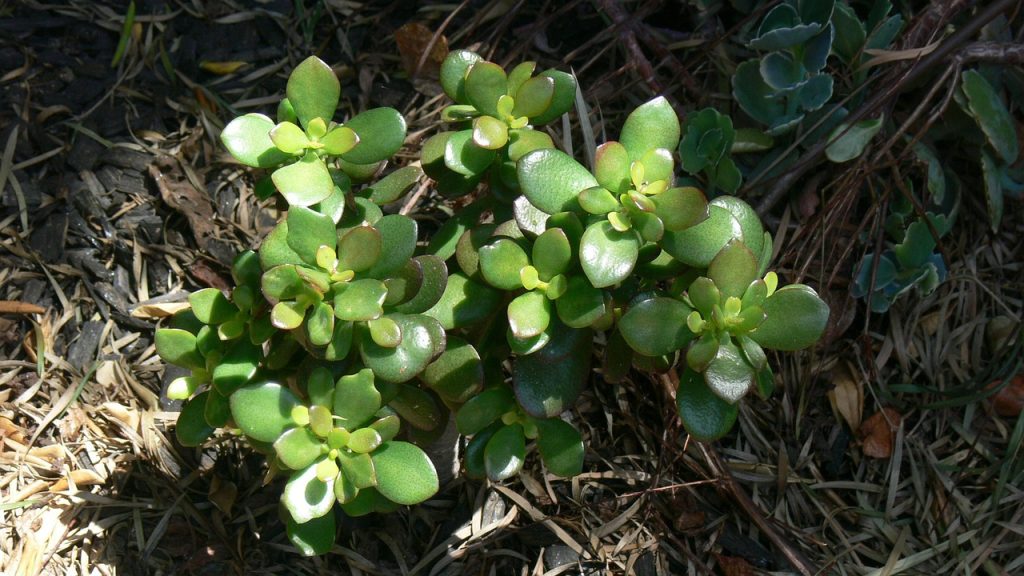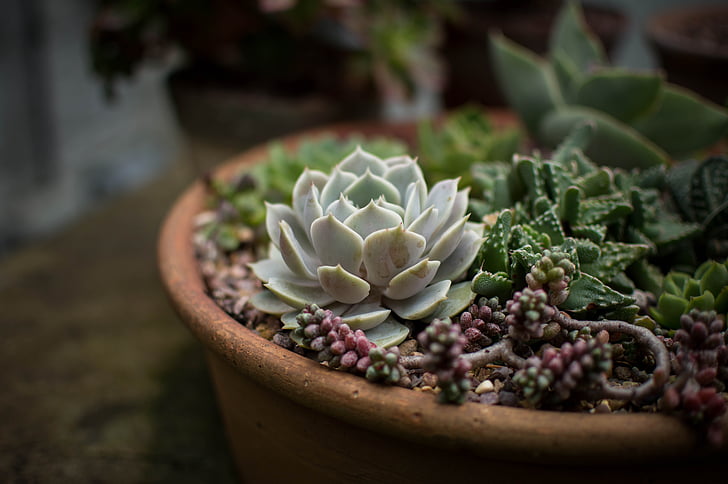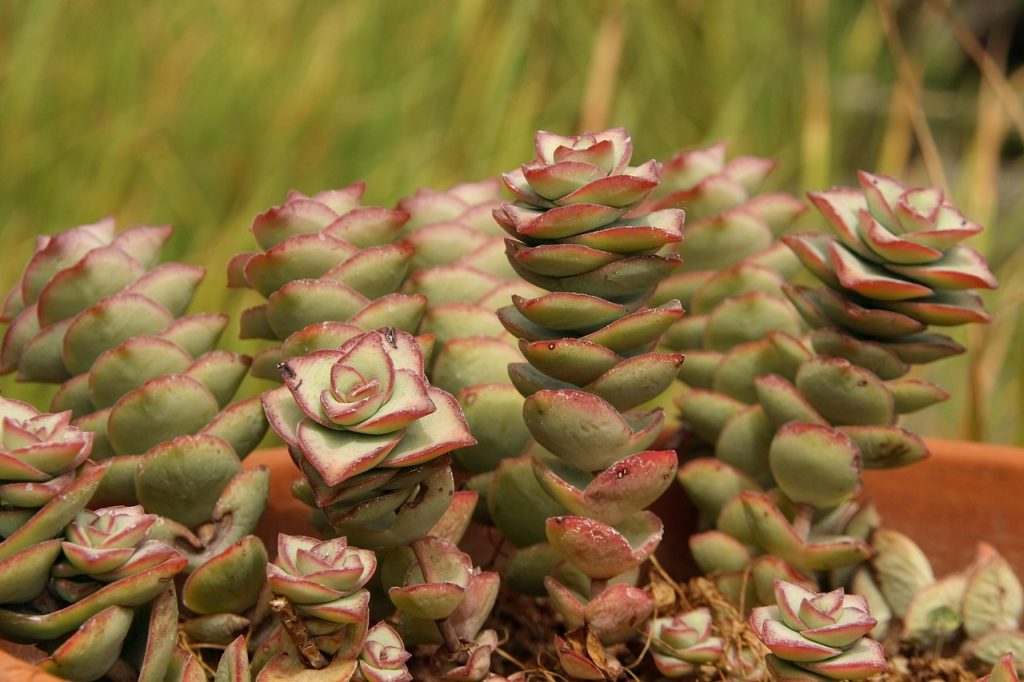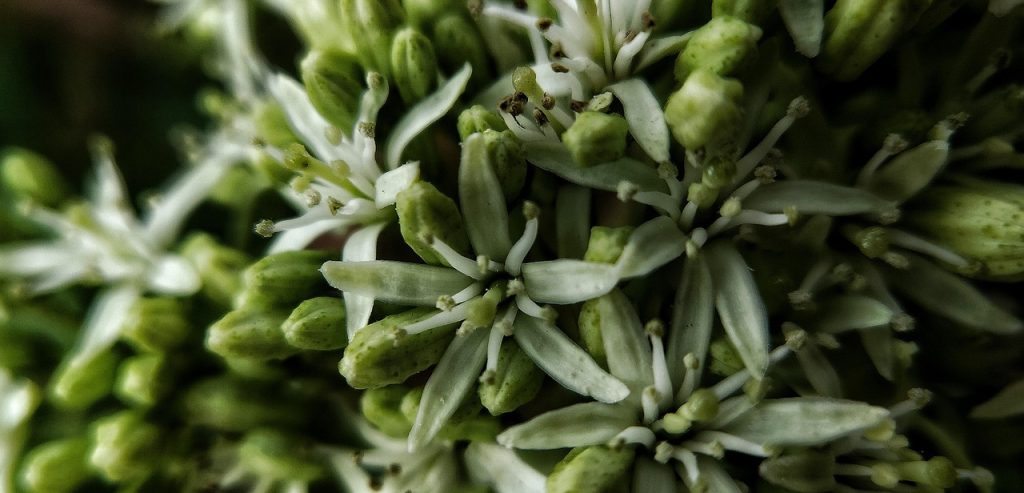Jade plants, known for their glossy, thick leaves and tree-like growth, are beloved houseplants that bring a touch of nature indoors. These succulents, primarily from the Crassula genus, are celebrated for their low-maintenance care, attractive appearance, and symbolic meaning of prosperity and good luck in many cultures. Whether you’re a beginner or an experienced plant enthusiast, jade plants offer a variety of types to suit different spaces and aesthetics. This guide dives into the most popular jade plant types, their unique features, and practical tips to help you choose and care for the perfect one.

What Makes a Plant a “Jade Plant”?
Jade plants belong to the Crassula genus, with Crassula ovata being the most iconic species commonly referred to as the “jade plant.” These succulents are characterized by their fleshy, oval-shaped leaves, woody stems, and compact, tree-like growth. Unlike other Crassula species, jade plants are specifically prized for their ability to resemble miniature trees, making them ideal for bonsai-like displays or as statement pieces in homes.
While many Crassula species exist, only a select few are widely recognized as jade plants due to their similar growth habits and care needs. This guide focuses exclusively on these true jade plant varieties, avoiding unrelated species like Crassula perforata or Crassula rupestris, which are often misidentified.
Key Characteristics of Jade Plants:
- Leaves: Thick, glossy, and water-storing, typically green but with colorful variations.
- Growth: Slow-growing, shrub-like or tree-like structure.
- Care: Low-maintenance, drought-tolerant, and thrives in bright light.
Popular Jade Plant Types
Below is a detailed list of the most popular and widely available jade plant varieties in the U.S., based on information from trusted sources like The Spruce, Gardening Know How, and community insights from r/succulents.

1. Crassula ovata (Classic Jade Plant)
- Visual Features: The classic jade plant has smooth, oval-shaped, glossy green leaves about 1–2 inches long. It grows upright with thick, woody stems, reaching 1–3 feet tall indoors. Mature plants may produce small, star-shaped pink or white flowers in late winter.
- Ideal Environment: Thrives in bright, indirect sunlight but tolerates some direct sun. Best suited for medium to large pots due to its potential size. Perfect for sunny windowsills or well-lit living rooms.
- Maintenance Level: Easy. Water every 2–3 weeks when the soil is dry. Use well-draining cactus or succulent soil. Prune to maintain shape or encourage bushiness.
- Why Choose It?: Its timeless look and forgiving nature make it ideal for beginners.
2. Crassula ovata ‘Hummel’s Sunset’ (Golden Jade)
- Visual Features: Known for its vibrant, variegated leaves that shift from green to golden yellow and red, especially when exposed to bright light. The leaves are similar in shape to the classic jade but slightly smaller.
- Ideal Environment: Requires bright, direct sunlight to maintain its colorful foliage. Suitable for small to medium pots, making it a great accent plant for desks or shelves.
- Maintenance Level: Moderate. Needs consistent light to preserve its golden hues. Water sparingly, as overwatering can dull its colors. Avoid low-light areas.
- Why Choose It?: Adds a pop of color to minimalist or modern spaces.
3. Crassula ovata ‘Gollum’ (Trumpet Jade)
- Visual Features: Distinctive for its tubular, elongated leaves with red-tipped ends resembling tiny trumpets. It grows compactly, reaching about 1–2 feet tall, with a shrubby, dense structure.
- Ideal Environment: Prefers bright, indirect light but can handle some shade. Ideal for small pots or as a centerpiece in mixed succulent arrangements.
- Maintenance Level: Easy to moderate. Water every 2–3 weeks, ensuring the soil dries out completely. Prone to leaf drop if overwatered or kept in low light.
- Why Choose It?: Its unique leaf shape adds an quirky, sculptural element to collections.
4. Crassula ovata ‘Hobbit’
- Visual Features: Similar to ‘Gollum’ but with slightly shorter, curled, tube-like leaves that are fully green or lightly red-tipped. It grows to about 1–2 feet with a compact, bushy form.
- Ideal Environment: Thrives in bright, indirect light and adapts well to small or medium pots. Great for tabletops or as part of a succulent garden.
- Maintenance Level: Easy. Water sparingly and ensure good drainage. Avoid frequent repotting, as it prefers being slightly root-bound.
- Why Choose It?: A great middle ground between the classic jade and the more unusual ‘Gollum’ variety.

5. Crassula arborescens (Silver Jade)
- Visual Features: Features round, silvery-blue leaves with red edges when stressed by sunlight. It grows taller and more tree-like than Crassula ovata, often reaching 3–4 feet indoors.
- Ideal Environment: Needs bright, direct sunlight to maintain its silvery sheen. Best in large pots due to its size. Ideal for spacious rooms or patios with ample light.
- Maintenance Level: Moderate. Requires more sunlight than other jades and is sensitive to overwatering. Use a gritty, well-draining soil mix.
- Why Choose It?: Its striking silver foliage makes it a bold, elegant choice for larger spaces.
6. Crassula ovata ‘Crosby’s Compact’ (Mini Jade)
- Visual Features: A dwarf variety with tiny, glossy green leaves and a compact, bushy growth habit, typically staying under 1 foot tall. Perfect for small spaces.
- Ideal Environment: Thrives in bright, indirect light but tolerates lower light better than other varieties. Ideal for small pots, terrariums, or desktops.
- Maintenance Level: Easy. Water every 2–3 weeks, ensuring the soil dries out. Avoid overpotting, as it prefers snug containers.
- Why Choose It?: Perfect for beginners or those with limited space.
How to Choose the Right Jade Plant Type for Your Home
Selecting the right jade plant depends on your space, lighting, and aesthetic preferences. Here’s a quick guide to match varieties with your needs:
- Small Spaces (Desks, Shelves): Choose Crassula ovata ‘Crosby’s Compact’ or ‘Hobbit’ for their compact size and ability to thrive in small pots. These are perfect for apartments or offices.
- Bright, Sunny Areas: Crassula ovata ‘Hummel’s Sunset’ or Crassula arborescens shine in direct sunlight, showcasing their colorful or silvery leaves.
- Unique Aesthetics: Crassula ovata ‘Gollum’ or ‘Hobbit’ offer unusual leaf shapes for a quirky, eye-catching display.
- Large Spaces: The classic Crassula ovata or Crassula arborescens suit bigger pots and open areas, growing into impressive, tree-like specimens.
- Low Maintenance: All jade plant types are relatively easy, but the classic Crassula ovata and ‘Crosby’s Compact’ are the most forgiving for beginners.
Consider your light conditions, jade plants generally need at least 4–6 hours of bright light daily. For hanging baskets, compact varieties like ‘Crosby’s Compact’ work well, while larger pots suit the classic jade or silver jade. If you’re exploring other sun-loving plants, Russian Sage is another beautiful, drought-tolerant option to consider.

Basic Jade Plant Care Tips
While each variety has specific needs, these universal care tips apply to all jade plants:
- Soil: Use a well-draining cactus or succulent potting mix. Add perlite or sand for extra drainage.
- Watering: Water every 2–3 weeks, allowing the soil to dry completely between waterings. Overwatering is the leading cause of jade plant issues.
- Sunlight: Provide 4–6 hours of bright, indirect light daily. South- or west-facing windows are ideal. Some varieties, like ‘Hummel’s Sunset,’ need direct sun for vibrant colors.
- Pruning: Trim leggy stems to encourage bushy growth. Use clean, sharp scissors and prune in spring for best results.
- Repotting: Repot every 2–3 years or when the plant becomes root-bound. Choose a pot slightly larger than the current one with drainage holes.
Common Mistakes to Avoid
- Overwatering: Jade plants store water in their leaves, so frequent watering leads to root rot. Always check soil dryness before watering.
- Lack of Light: Insufficient light causes leggy growth and pale leaves. Move your plant to a brighter spot if it starts stretching.
- Misidentification: Not all Crassula species are jade plants. Ensure you’re purchasing a true jade variety (e.g., Crassula ovata or arborescens) by checking leaf shape and growth habit.
FAQs
While not extremely rare, Crassula ovata ‘Hummel’s Sunset’ is less common than the classic jade due to its unique variegation. Specialty nurseries or online retailers may carry it.
Yes, most jade plants are low-maintenance, but varieties like Crassula arborescens require more sunlight and careful watering compared to the forgiving Crassula ovata.
Yes, jade plants can be grown together in a single pot or arrangement, provided they receive similar light and water conditions. Pair compact varieties like ‘Crosby’s Compact’ with ‘Gollum’ for visual interest.
Check the leaf shape and growth habit. Classic jade (Crassula ovata) has oval, glossy leaves, while ‘Gollum’ has tubular leaves, and ‘Hummel’s Sunset’ shows yellow-red variegation. Compare with photos from reputable sources like The Spruce or Succulent Plant Care.
Conclusion
Jade plants are a versatile and rewarding addition to any home, offering a range of sizes, colors, and shapes to suit every preference. From the classic Crassula ovata to the vibrant ‘Hummel’s Sunset’ or compact ‘Crosby’s Compact’, there’s a jade plant type for every space and skill level. By understanding their unique features and care needs, you can confidently choose the perfect variety to thrive in your home. Start with a forgiving variety like the classic jade, and enjoy the beauty and symbolism of these charming succulents.